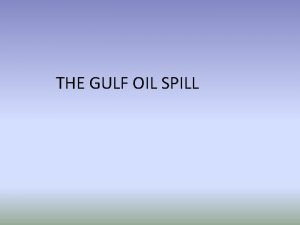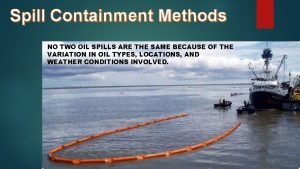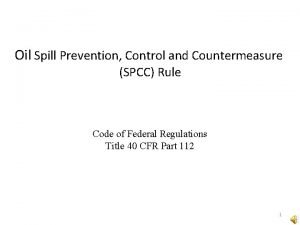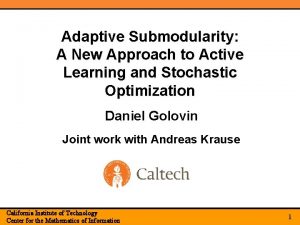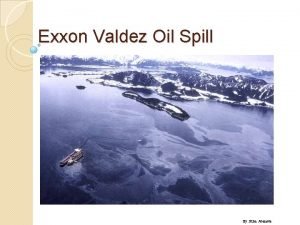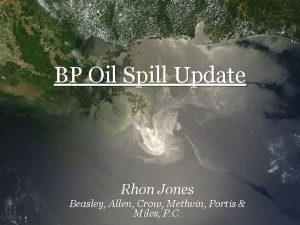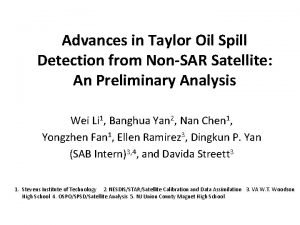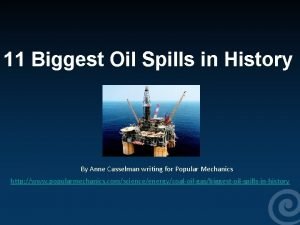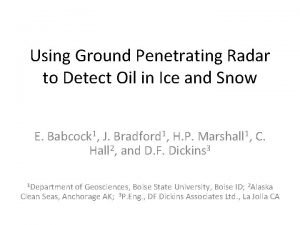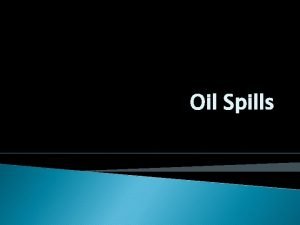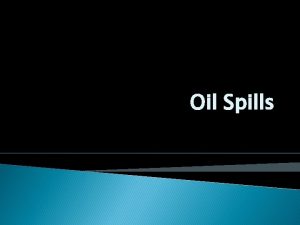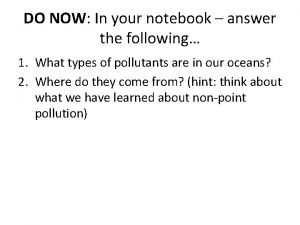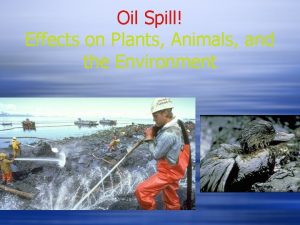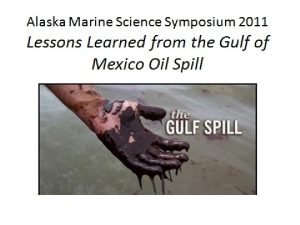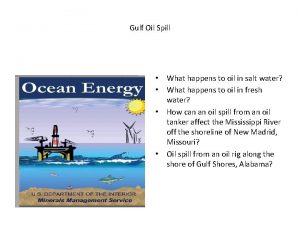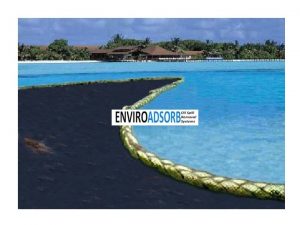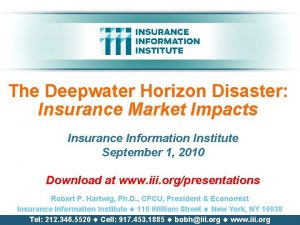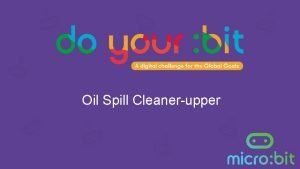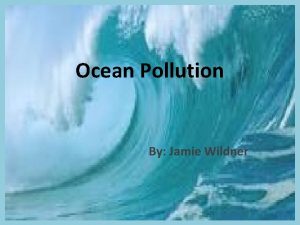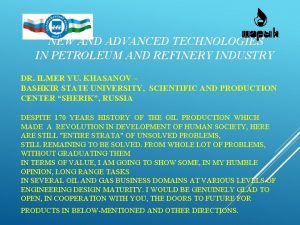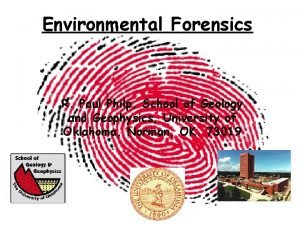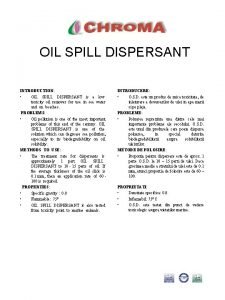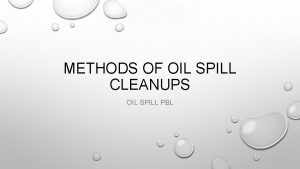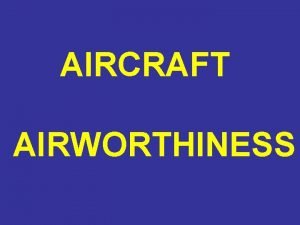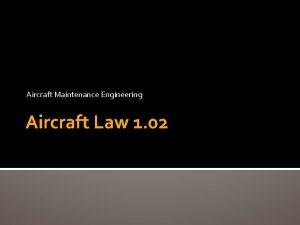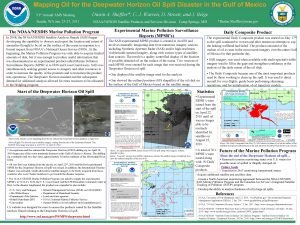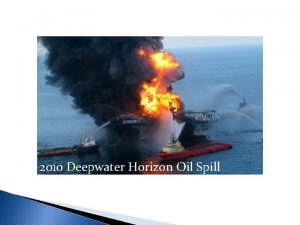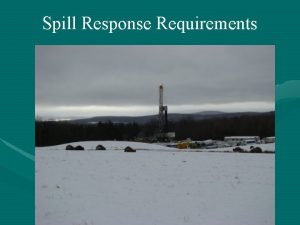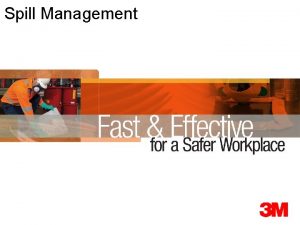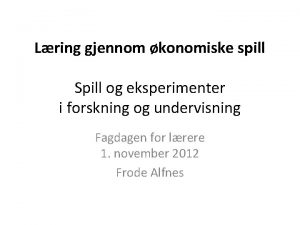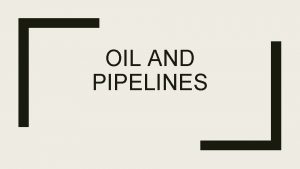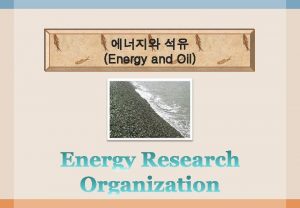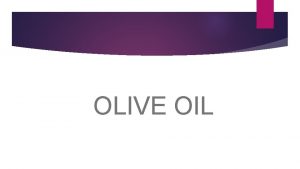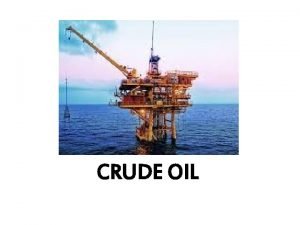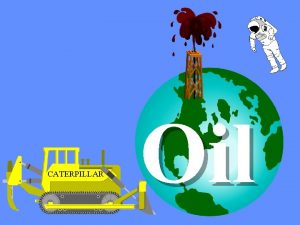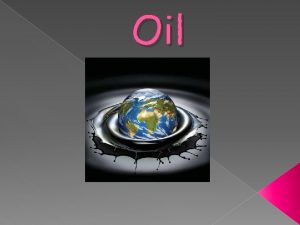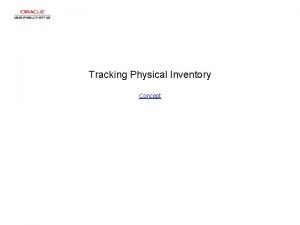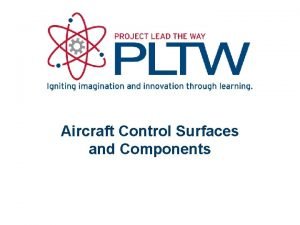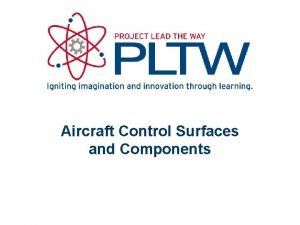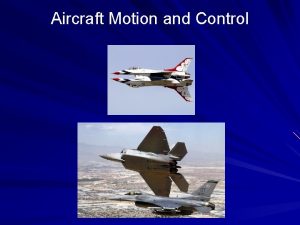Oil Spill Detection and Tracking Technologies Aircraft and

























- Slides: 25


Oil Spill Detection and Tracking Technologies • Aircraft and Autonomous Aircraft Detection Methods • Autonomous Surface Vessel Tracking Methods • Autonomous Underwater Vehicle Plume Mapping and Sampling Methods • Underwater Acoustic Plume Mapping Methods • HF Radar Tracking Methods • Manned Submersibles • Seismic Plume Mapping Methods: not performed

Wave. Glider Autonomous Surface Vessel, Liquid Robotics • Wave energy provides thrust, surface float = 2 m long; glider 7 m down • Solar energy or batteries power payloads • Can travel to remote areas • Full satellite comms • Variety of sensor options • Low operating costs

Wave. Glider Autonomous Surface Vessel, showing once/min Iridium burst comms position, moving @1 knot, w real-time control

Oil Spill Detection and Tracking Technologies: Autonomous Surface Vessels w Fluorometers Weather Station 1 m above water line. Air Temp, Barometric Press, Wind Speed & Direction. Forward dry box with integrated Fluorometer. Array & support electronics. (0 meters) Optical Dissolved Oxygen Sensor (0 meters) Hydrodynamic enclosure with integrated Fluorometer. Array, Optical Dissolved Oxygen Sensor, and support electronics. (7 meters)

Oil Spill Detection and Tracking Technologies: Autonomous Surface Vessels w Digital or Video Cameras, and image from camera

Autonomous Underwater Vehicle Technology: WHOI Sentry

Autonomous Underwater Vehicle Technology: WHOI Sentry Mass Spec Plume Map

Autonomous Underwater Vehicle Technology: WHOI Jaguar/Puma…has worked worldwide, including under ice in arctic. Includes 3 D HDTV, other sensor options. Speed @0. 5 kt, 24 hr endurance

Jaguar/Puma AUV has small shipping footprint, requires team of only 3 operators; are 3 vehicles and teams available. Does not require large ship.

Transponders can be used for precise benthic positioning, or AUV can be acoustically tethered (without transponders)

Problem: Untrawlable Habitat

AUV Can be Used for Essential Fish Habitat Surveys as in the Stellwagen Bank Marine Sanctuary

Puma seafloor AUV HD Video quality results

Distribution and anemones and sponges at 85°E

ROV Ops under ice: First melt a hole

Testing the Small ROV

ROV Video

COVIS: Cable Operated Vent Imaging Sonar at Neptune Observatory, B. C. , uses a Reson 7125 multibeam sonar to measure vent plumes

COVIS setup showing range in one mode; range in vertical can be greatly increased by altering scan angles

COVIS results on vent plume intensity and velocity

HF Surface Current Radar Maps, Zoomed in, satellite view, So. Cal. Coastal Ocean Obs. System

HF Radar Surface Current Mapping • • Records surface currents @every 20 minutes Best if multiple locations along coast are used Ice reflection stronger than surface currents Can discriminate ice movements and surface currents Does best (furthest range) with some seas Range @30 -100 km depending on seas, radar Requires remote power which has been developed Units can be airlifted in along coast

HF Radar Surface Current Mapping • In Go. M, Louisiana had no HF radars, offer to do emergency install got bogged down in government inter-agency discussions, never happened: could have improved shore party deployments • Off Alaska North Slope and Canada coastal coverage is incomplete, but new remote power developments could facilitate gap-filling and emergency deployments • Commerical provider taking steps to maintain spare inventory for emergency responses • Coverage of Chukchi coast and Bering coasts very spotty / inadequate at present • Ice and surface current separate flow studies to date only demonstrated in 2 day study: longer studies would be useful to make these measurements more routine, reliable

Manned Submersibles: Deepworker 2000, good to 2000’ used by Harte Res. Inst. , Texas & National Geographic Society
 Oil spill
Oil spill Oil spill
Oil spill Oil spill
Oil spill Clayton antitrust act def
Clayton antitrust act def Oil spill
Oil spill Oil spill
Oil spill Oil spill
Oil spill Oil spill
Oil spill Rhon jones beasley allen
Rhon jones beasley allen Oil spill
Oil spill Getty
Getty Oil spill
Oil spill Soca3666
Soca3666 Oil rig explosion
Oil rig explosion Oil spill
Oil spill Oil spill
Oil spill In your notebook answer the following question
In your notebook answer the following question Oil spill
Oil spill Oil spill
Oil spill Oil spill
Oil spill Oil spill
Oil spill Brownsville lhwca lawyer
Brownsville lhwca lawyer Oil spill
Oil spill Oil spill
Oil spill Oil spill
Oil spill Oil spill
Oil spill
